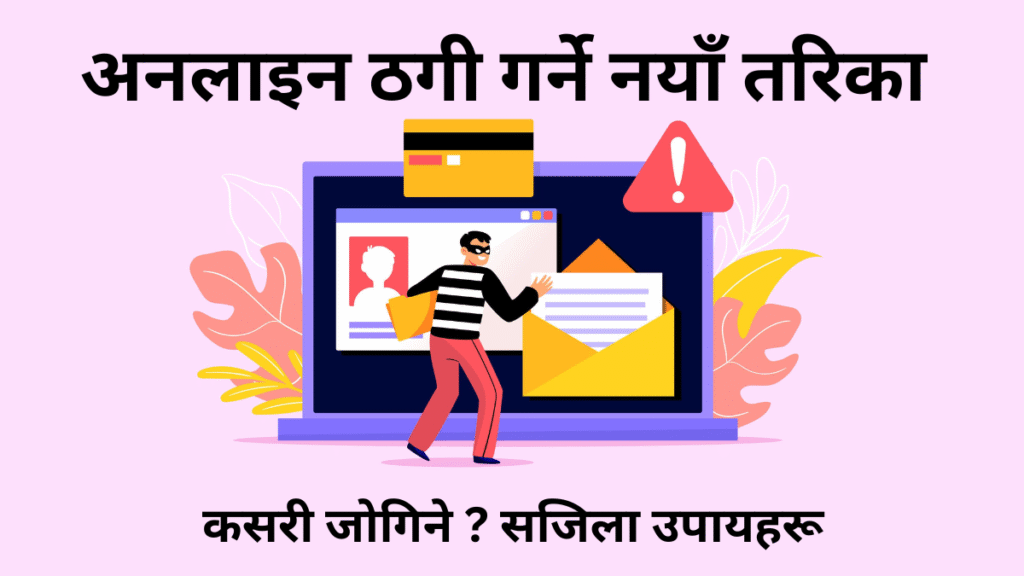New Types of Online Fraud and Easy Ways to Stay Safe
In today’s fast-moving digital world, technology has made our lives more convenient. However, along with these advancements, the risks of online fraud have also increased. If you use a smartphone, computer, or the internet, you may become a potential target of cybercrime.
This article explains the latest online fraud techniques and provides practical tips to protect yourself effectively.
What is Online Fraud?
Online fraud is when criminals use the internet to deceive people and steal their personal information, money, or data. These fraudsters reach out through social media, emails, fake websites, messages, or phone calls, gain your trust, and then exploit it for their benefit.

Latest Types of Online Fraud
Today’s scammers are far more clever and technology-friendly than before. They use creative and manipulative methods to trick people. Some of the most common fraud types are:
Fake E-commerce Website Fraud
- Fraudsters create fake websites with attractive discounts and branded products at low prices.
- After payment, either the product never arrives, or customers receive cheap counterfeit goods.
Phishing Emails and Messages
- Fake emails pretending to be from trusted brands like banks, PayPal, or Gmail.
- Clicking on links can steal your password, bank details, or ATM information.
Online Job Scams
- Scammers promise jobs like “Work From Home,” “Typing Jobs,” or “Easy Online Income” on WhatsApp or Telegram.
- Victims are asked to pay a registration fee, after which the scammers disappear.
Romance or Emotional Fraud
- Fraudsters create fake love relationships on platforms like Facebook and Instagram.
- Later, they demand money with excuses like travel expenses or fake gift deliveries.
Loan App Fraud
- Fake apps claim to provide quick and easy loans.
- After collecting personal information, they charge hidden fees and use personal data for blackmail.
Cryptocurrency Investment Scam
- Fraudsters lure victims with promises of high returns from Bitcoin or other digital currencies.
- Once money is transferred, the fraudulent site vanishes.
OTP and Call Spoofing Scams
- Scammers call while pretending to be from banks, telecoms (NTC/Ncell), or customer care.
- They ask for OTP codes, which leads to account hacking.
How to Stay Safe – Simple and Practical Tips
Avoid Suspicious Links or Websites
- Never click on strange or unusual links.
- Always check for HTTPS (🔒) websites for security.
Enable Two-Factor Authentication (2FA)
- Activate 2FA on all social media and banking accounts.
- Adds an extra layer of protection to your accounts.
Keep Software and Apps Updated
- Outdated versions may contain security weaknesses.
- Download apps only from official sources.
Use Strong and Unique Passwords
- Avoid weak passwords like “123456” or “yourname@123.”
- Use different and complex passwords for each account.
Use VPN on Public Wi-Fi
- Public Wi-Fi makes your data vulnerable.
- A VPN secures your connection and hides your location.
Verify Messages from Banks or Government
- Contact official websites or helplines to confirm authenticity.
Never Share Sensitive Information
- Never share ATM card numbers, CVV, passwords, or OTPs with anyone—even if they claim to be customer support.
Conclusion
The digital world offers us immense convenience but also carries risks. Staying alert, informed, and careful is the only way to protect yourself from online fraud. Even a small mistake can result in huge financial or personal losses.
Remember: “Your safety in the digital world depends on your awareness.”
Final Message
- If you found this article helpful, share it to spread awareness.
- If you have been a victim of online fraud, contact your nearest cyber bureau or police immediately.
- Share your experiences in the comments to help others stay safe.






